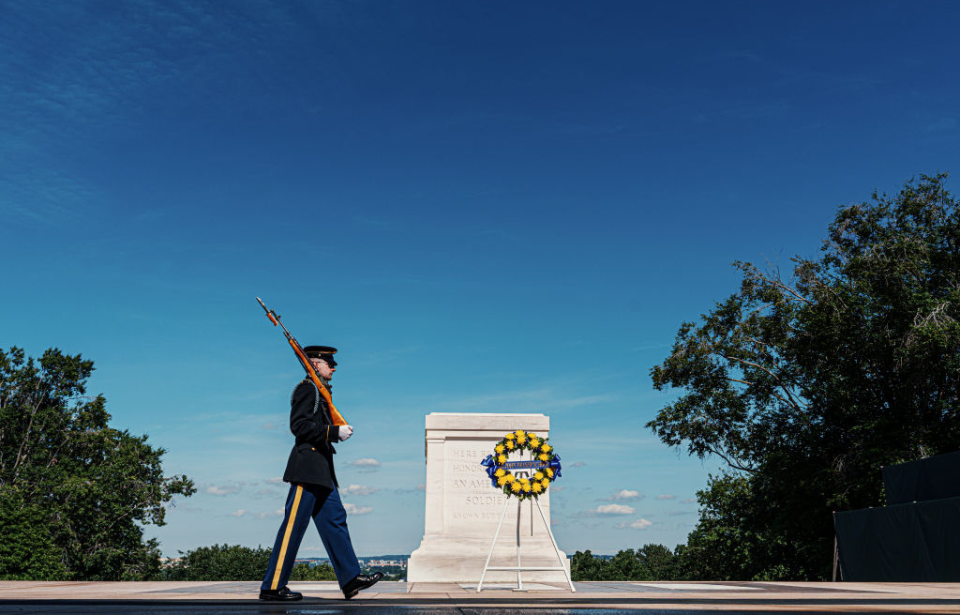The Tomb of the Unknown Soldier, at Arlington National Cemetery, is one of the most symbolic and hollowed sites in the United States. It represents and is dedicated to US service members who were lost, but never identified, to the nation’s wars.
The tomb was constructed just after World War I to bury a single unknown soldier who was lost during the conflict. The idea was “to bring home the body of an unknown American warrior who in himself represents no section, creed, or race in the late war and who typifies, moreover, the soul of America and the supreme sacrifice of her heroic dead.”
While it’s an iconic site in America, there are many traditions and stories relating to the Tomb of the Unknown Soldier, some of which you may not know.
Recipient of the Medal of Honor and the Victoria Cross
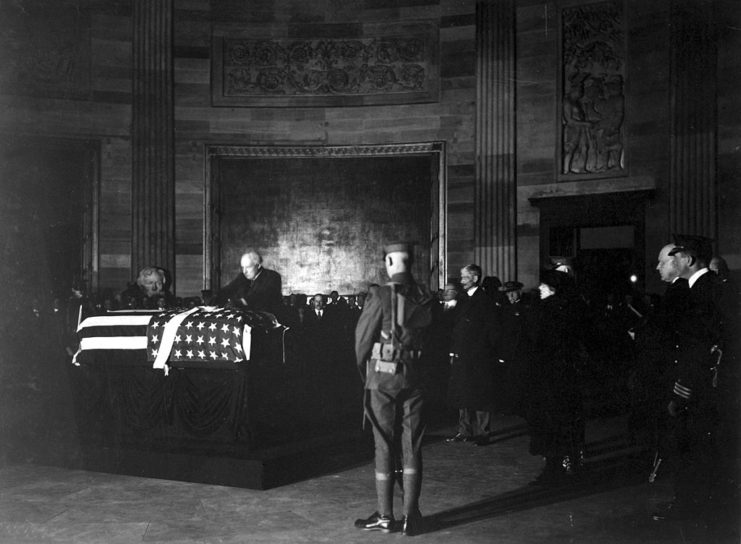
The Unknown Soldier was buried in a state funeral on November 11, 1921. The ceremony was attended by US President Warren G. Harding and other foreign dignitaries.
Harding placed America’s highest award, the Medal of Honor, on top of the casket. A Victoria Cross was also put on the casket, along with other decorations.
Four ‘Unknowns’ were considered
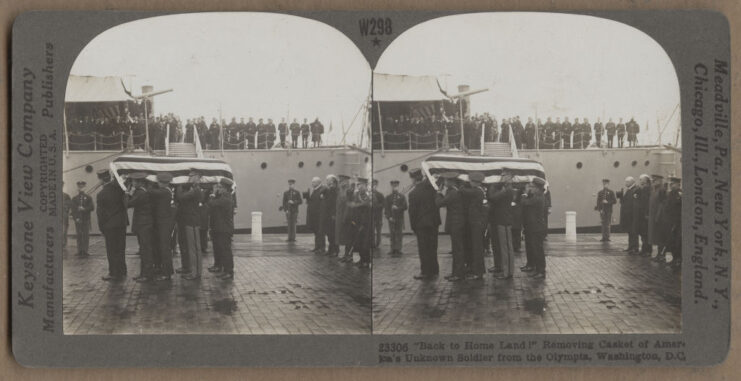
To select the person buried within the tomb, four unknown soldiers killed during World War I were exhumed in France. Before being returned to the United States, the remains of the men were placed in caskets and arranged in random order at the city hall in Châlons-sur-Marne.
Sgt. Edward F. Younger of Headquarters Company, 2nd Battalion, 50th Infantry was chosen to pick one of the caskets. He then placed a spray of white roses on one of them. The “Unknown” was then sent to the US to be interred in the tomb.
World War II and Korean War ‘Unknowns’
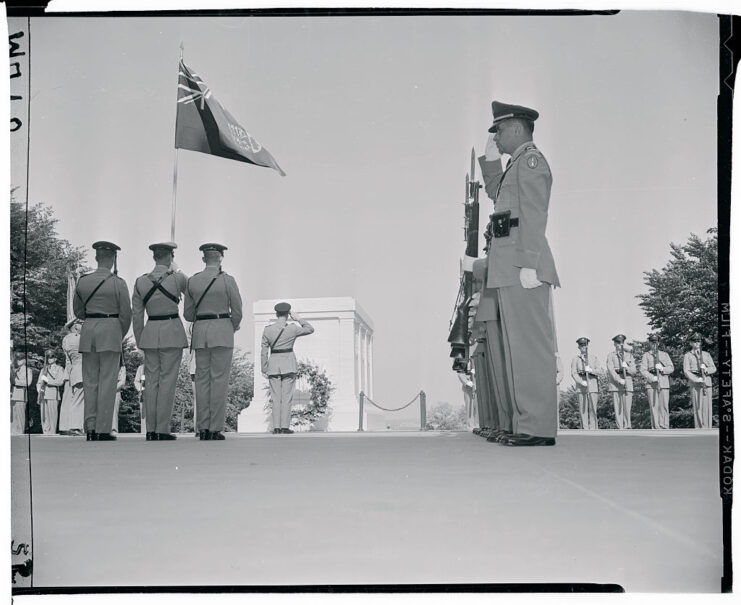
After World War II, many Americans supported the idea of placing an Unknown Soldier from the conflict in the tomb, but these plans were halted upon the outbreak of the Korean War in June 1950.
In August 1956, three years fighting in Korea had ceased, US President Dwight D. Eisenhower approved the internment of one “Unknown” from each conflict. After being selected, they arrived in Washington, DC, where, for two days, they remained in the Capitol Rotunda. After this, they were placed in crypts at Arlington National Cemetery.
Selecting an Unknown Soldier from World War II was complicated
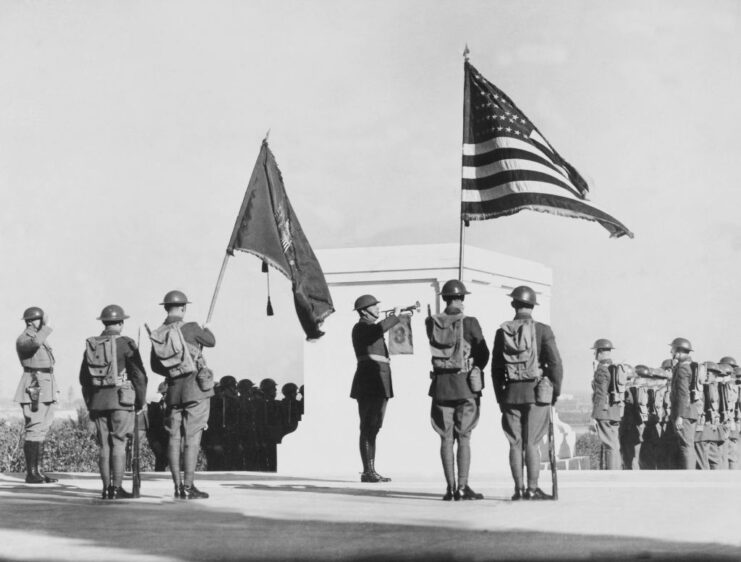
Choosing an “Unknown” from World War II was difficult, considering US troops had fought in a number of different theaters. Choosing a service member from one wouldn’t represent all those lost in the conflict. As a result, 13 “Unknowns” were selected from North Africa and Europe. Maj. Gen. Edward J. O’Neill selected one to represent those lost in both regions.
For the Pacific, five “Unknowns” were exhumed and taken to Hickam Air Force Base, Hawaii. Col. Glenn T. Eagleston selected one of them to represent those lost in the theater.
On May 26, 1958, the two were placed side-by-side on the deck of the USS Canberra (CA-70), off the coast of Virginia. Navy Hospital Corpsman 1st Class William R. Charette chose one, who was then taken to Arlington National Cemetery.
The “Unknown” who was not chosen was given a burial at sea.
Old Guard
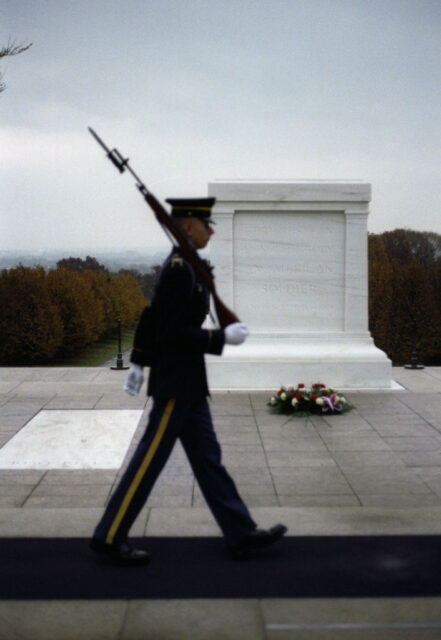
The Old Guard is perhaps the most well-known part of the Tomb of the Unknown Soldier. Since April 6, 1948, these troops have stood by the tomb 24 hours a day, seven days a week, 365 days a year. They’re from the 3rd Infantry Regiment and are also used in other military-related events.
More from us: The A-10 Warthog Was Built to Last – And These Facts Prove It
Want to become a trivia master? Sign up for our War History Fact of the Day newsletter!
Trained and disciplined to an extremely high level, every movement and action by Sentinels from the Old Guard has meaning, as Arlington National Cemetery explains:
“The Guard marches 21 steps down the black mat behind the Tomb, turns and faces east for 21 seconds, turns and faces north for 21 seconds, and then takes 21 steps down the mat. Next, the Guard executes a sharp ‘shoulder-arms’ movement to place his/her weapon on the shoulder closest to the visitors, signifying that he or she stands between the Tomb and any possible threat.
“The number 21 symbolizes the highest symbolic military honor that can be bestowed: the 21-gun salute.”
